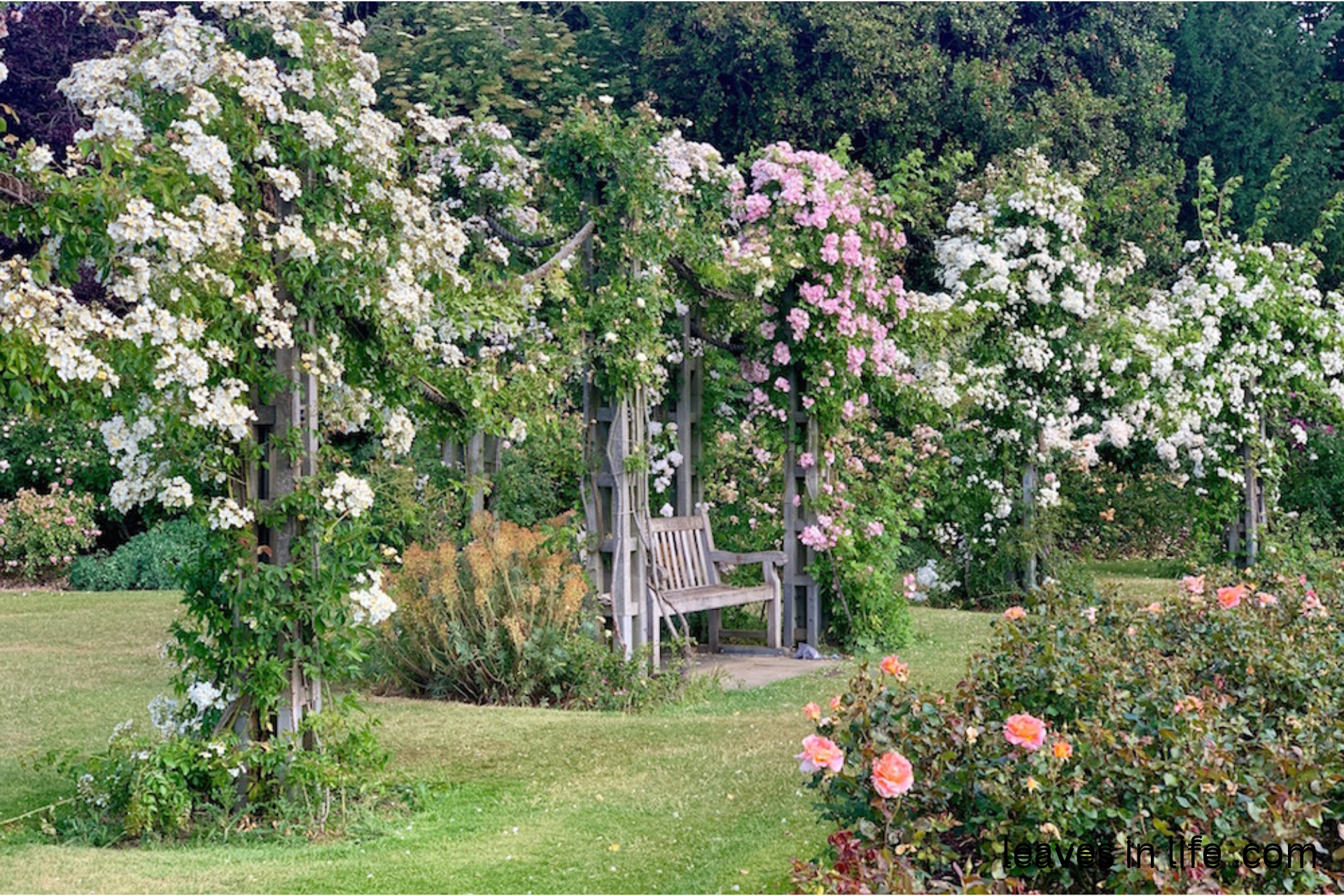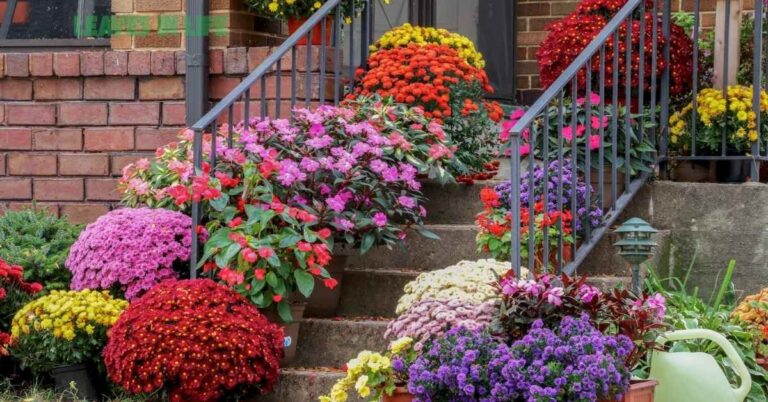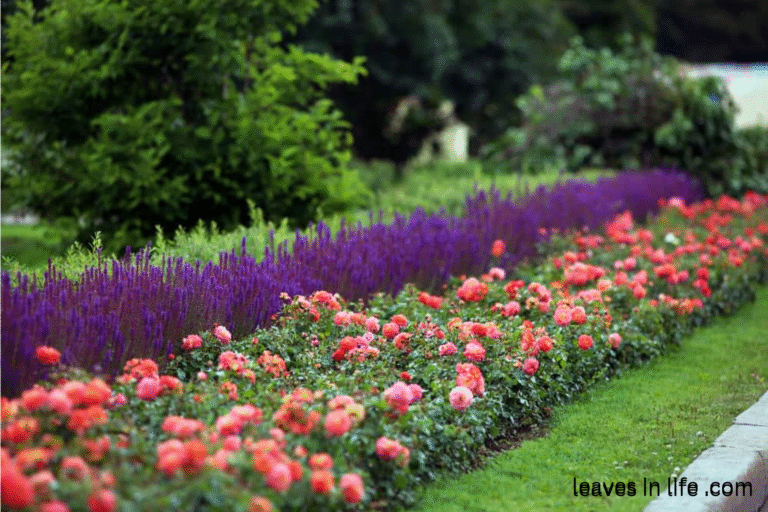Whenever I crave a touch of romance and old-world charm, I find myself drawn to enchanting Rose gardens in London. These aren’t just floral displays — they’re living, breathing works of art, fragrant escapes tucked away within the city’s vibrant streets. Strolling through them feels like stepping into a timeless painting: arches draped in cascading blooms, perfectly kept beds bursting with colour, and the gentle hum of bees weaving between petals. If you’re anywhere in the UK, trust me — these rose gardens in London feels like havens you absolutely worth a visit.
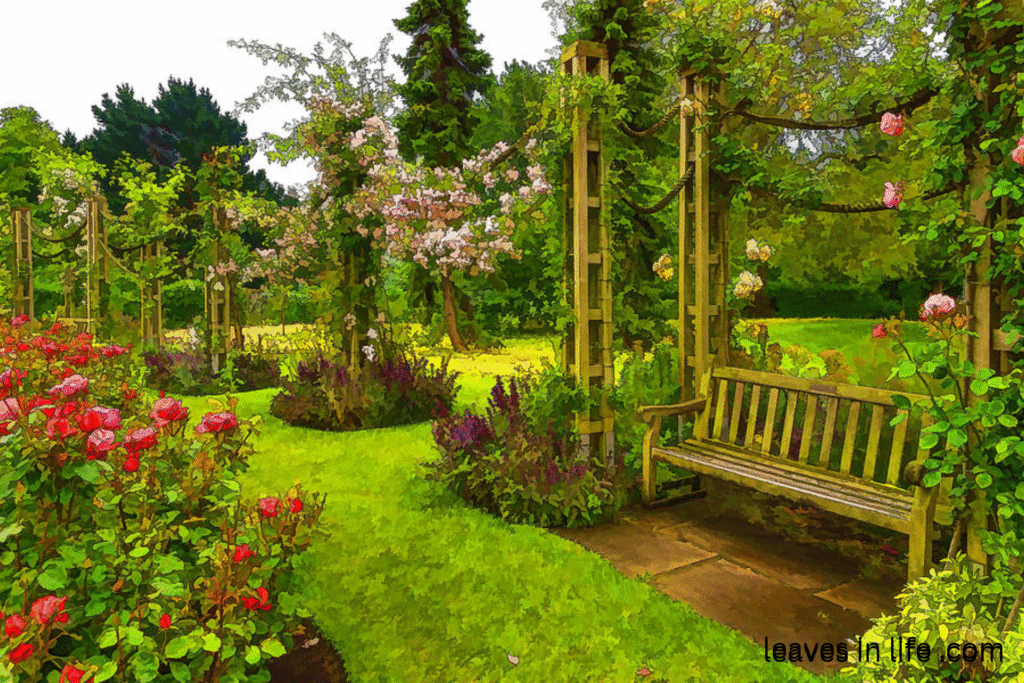
Rose gardens in London bloom with timeless beauty, where thousands of vibrant roses create a sea of colour and fragrance with other companion plants. Strolling through these historic gardens feels like stepping into a living painting. Perfect for relaxation, photography, or romance, they promise an unforgettable escape in the heart of the city.
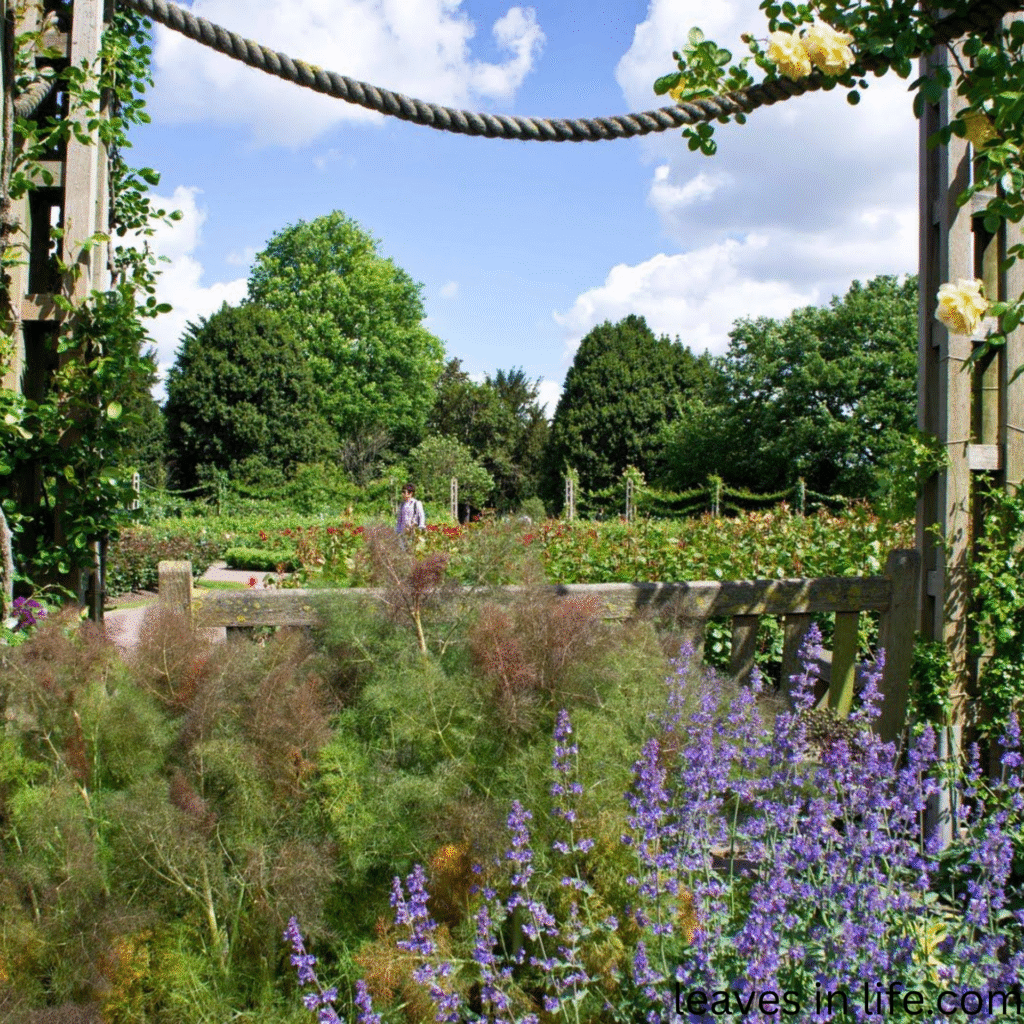
Regent Park London
Location: Queen Mary’s Gardens are located inside Regent’s Park in central London, UK. The main entrance is via Chester Gate on the park’s Inner Circle (postcode NW1 4NR).
Accessibility: Wheelchair-accessible, with smooth, wide paths throughout Regent’s Park. Benches are available for rest, and public toilets are nearby.
Best time to visit: Late May to early July is the best time to visit, when the roses are at their peak bloom and the gardens are most colourful and fragrant.
Queen Marry’s gardens in London
Queen Mary’s Gardens, nestled in Regent’s Park, hold London’s largest collection of roses, displaying over 12,000 blooms each summer. This iconic spot sets the tone for exploring the most beautiful rose gardens in London in the sections ahead.
Historic Importance:
Queen Mary’s Gardens were created by Duncan Campbell, the Superintendent of Regent’s Park at the time, in 1932, and named in honour of Queen Mary, wife of King George V. Queen Mary’s Gardens transformed a former nursery in Regent’s Park into a public ornamental space. Designed in elegant Edwardian style, they feature lawns, paths, and formal beds. Today, they hold London’s largest and most diverse rose collection.Its one of the largest Rose gardens in London.
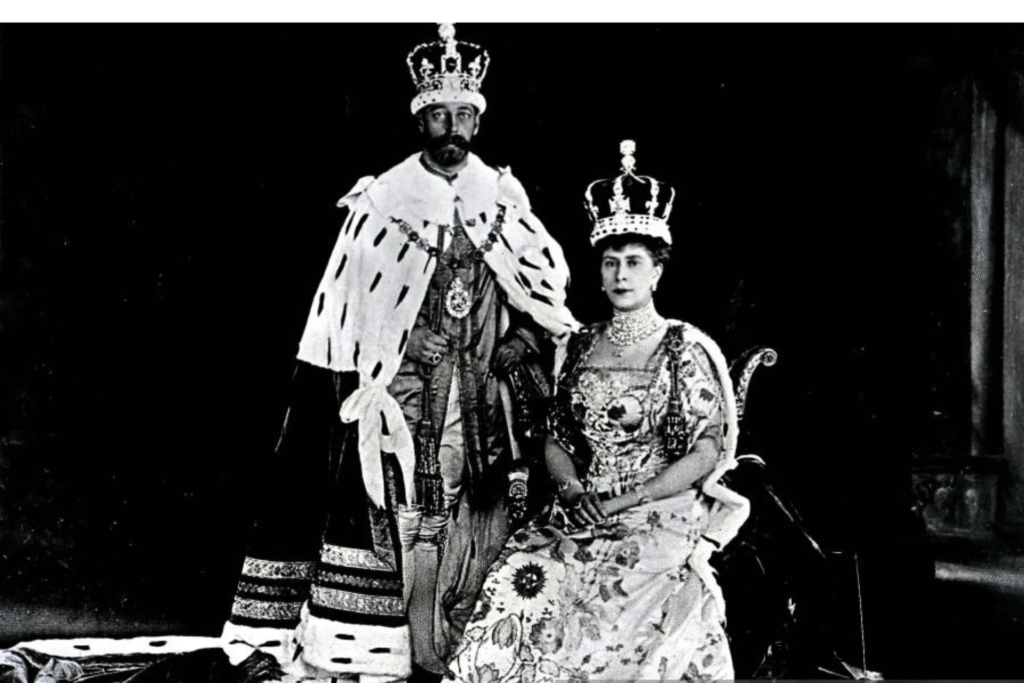
Queen Mary’s Rose Gardens in London are important as premier showcase of roses, preserving historic and modern varieties in one place. They serve as a cultural, horticultural, and recreational landmark — educating visitors, supporting biodiversity, and offering a peaceful escape in the city’s heart.
Navigation:
- Location: Regent’s Park, London, NW1 4NR
- Main Entrances: Chester Gate, Inner Circle
- By Tube: Take the Bakerloo, Jubilee, Circle, Metropolitan, or Hammersmith & City line to Regent’s Park, Baker Street, or Great Portland Street. Walk about 10–15 minutes to the Inner Circle entrance.
- By Bus: Routes 18, 27, 30, 88, 205, or 453 stop near Regent’s Park.
- By Taxi/Car: Head towards Regent’s Park Inner Circle via Chester Gate. Limited parking is available; public transport is easier.
Annual Events:
- Summer Rose Garden Walks (late May to early June): Guided tours led by the Assistant Park Manager to admire the peak bloom of London’s largest rose collection (approx. 12,000 roses).
- Friends Group Activities: Informal “Chit Chat” gatherings and themed walks such as “Wonderful Weeds Guided Walks” and “Green Escapes” exploring nature and heritage across the park.
- Regent’s Park Music Festival (21 June – 21 September): A free summer festival featuring classical and jazz performances at the Bandstand, plus intimate concerts in hidden gardens like St. John’s Lodge.
- Taste of London (mid-late June): A culinary festival bringing food vendors and dining experiences into the park, typically running from 18 to 22 June
Nearby Landmarks:
- ZSL London Zoo – A short walk through Regent’s Park, perfect for families.
- Regent’s Park Open Air Theatre – Outdoor performances in summer.
- Madame Tussauds London – Famous wax museum near Baker Street.
- Sherlock Holmes Museum – A must-see for mystery fans on Baker Street.
- Primrose Hill – Offers one of London’s best skyline views.
Rose Varieties Found in Queen Marry’s Rose gardens in london:
Most notable rose varieties you’ll find on display at Queen Mary’s Rose Gardens in London, featuring both classic and modern cultivars across 85 single-variety beds — a true treat for rose enthusiasts.
Varieties: ~85
Individual roses: ~12,000+
- Simply the Best, Dawn Chorus, Adrianna,
- Westminster Pink, Charisma, Donatella
- Silver Shadow, Belmonte, Tintinara
- Linzi’s Smile (dual-colored)
- Britannia (bicolor)
- Pride of Cheshire
- Royal Philharmonic
- Doris Day
- Golden Smiles
- Blue for You
- Hybrid Tea, Polyantha, Climbing, Rambling
- Damask, Gallica, Alba, Centifolia
- Floribunda, Patio, Ground Cover
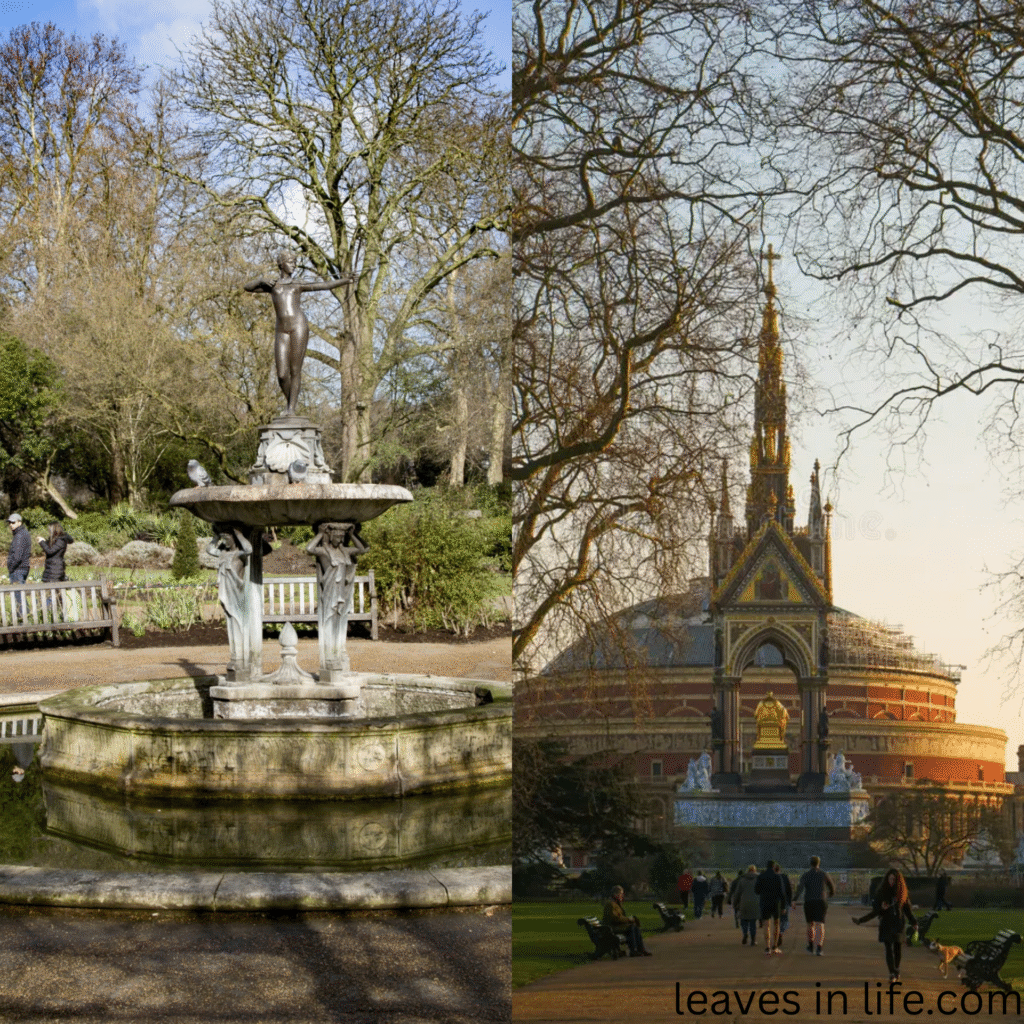
Hyde Park London
Location: Central London, Westminster, stretching from Kensington Palace in the west to Oxford Street and Marble Arch in the east, with Park Lane on the east and Bayswater Road on the north.
Accessibility: Hyde Park is easily accessible with multiple entrances around its borders. It’s open daily, free of charge, and well-connected by public transport, walking routes, and cycling paths. Wheelchair access is available throughout most areas.
Best time to visit: late spring to early autumn (May–September) when the gardens are in full bloom. Early mornings and weekdays are ideal for a quieter, more peaceful experience.
Hyde park rose gardens in London
Hyde Park, one of London’s largest and most iconic parks, is a haven of greenery, history, and relaxation. Among its highlights are the rose gardens in London near Hyde Park Corner, where carefully designed beds showcase vibrant, fragrant roses in full bloom during summer. A stroll here offers a mix of natural beauty and transquility, making it a must-visit spot for nature lovers and photographers alike. One of the best rose gardens in London, it serves as an historical as well as educational spot.

Historic importance:
Hyde Park, created in 1536 by Henry VIII as a royal hunting ground, has long been a place for gatherings, protests, and public celebrations, making it central to London’s history. Its Rose Gardens in London, designed in 1994 by Colvin & Moggridge, adds a modern touch of elegance, blending historic landscape with timeless floral beauty. Together, they reflect both the park’s royal past and its continuing role as a space of culture, nature, and public life. It is one of the best rose gardens in London.
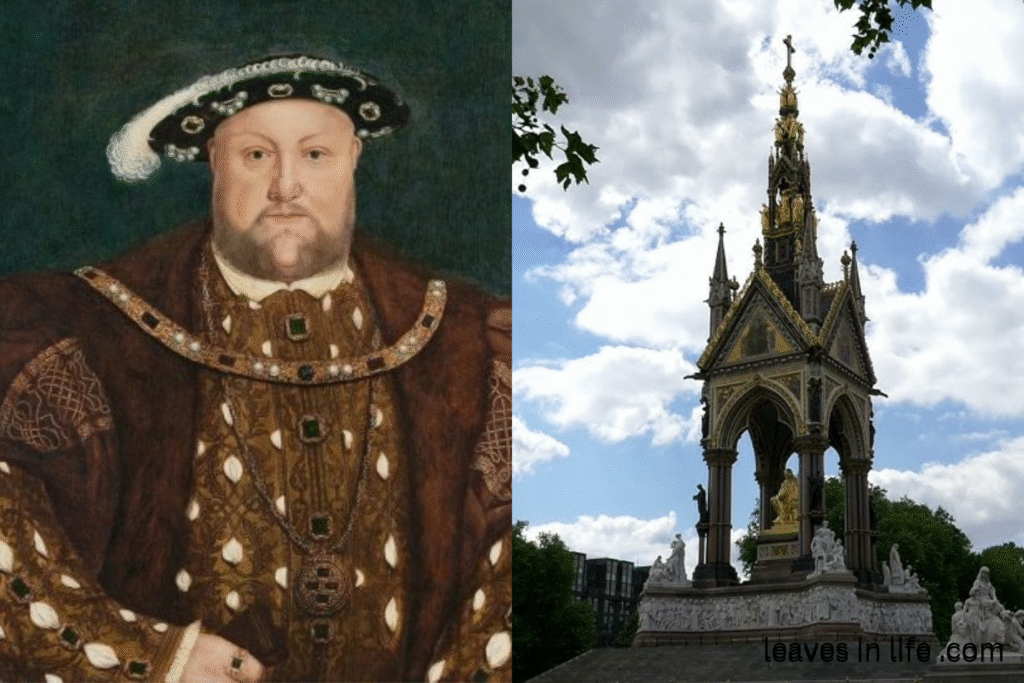
Navigation:
Location: The Rose Garden lies in the southeastern section of Hyde Park, near Hyde Park Corner and Wellington Arch.
Main Entrances:
- Hyde Park Corner Gate (near the Rose Garden)
- Marble Arch Gate (east side)
- Lancaster Gate (north side)
- Kensington Gate (west side, near Kensington Palace)
By Tube: Hyde Park Corner, Marble Arch, Lancaster Gate, Knightsbridge
By Bus: Several routes stop along Park Lane, Bayswater Road, and Knightsbridge (e.g., 9, 10, 52, 94, 148, 274).
By Taxi/Car: Taxis can drop you off at any main gate. Limited parking is available at Car Parks in Hyde Park Corner and Triangle Car Park (charges apply).
Annual events:
- Winter Wonderland – a festive Christmas market and fair (Nov–Jan)
- British Summer Time (BST) Hyde Park – open-air concerts with global artists (summer)
- Royal Gun Salutes – on special royal occasions
- Sporting Events & Races – such as charity runs, cycling, and fitness events
- Seasonal flowers display and guided tours
Nearby landmarks:
- Kensington Palace – Historic royal residence, home to generations of monarchs.
- Royal Albert Hall – Iconic concert venue for music and cultural events.
- Wellington Arch – Triumphal arch honoring the Duke of Wellington’s victories.
- Marble Arch – Famous London monument and historic gateway.
- Buckingham Palace – Official London residence of the British monarch.
- Harrods – World-renowned luxury department store in Knightsbridge.
Rose varieties:
about 25–40 different rose varieties
- Rosa Chilterns — dark red
- Rosa Saint Cecilia — light pink
- Rosa Armada — dark pink
- Rosa Simon Robinson — pink
- Rosa Cornelia — peach-pink
- Rosa Heritage — soft pink
- Rosa Perdita — cream to apricot with brighter centre
- Rosa Paul’s Perpetual White — white
- Rosa Gruss an Aachen — cream/white
- Rosa Charlotte — soft yellow
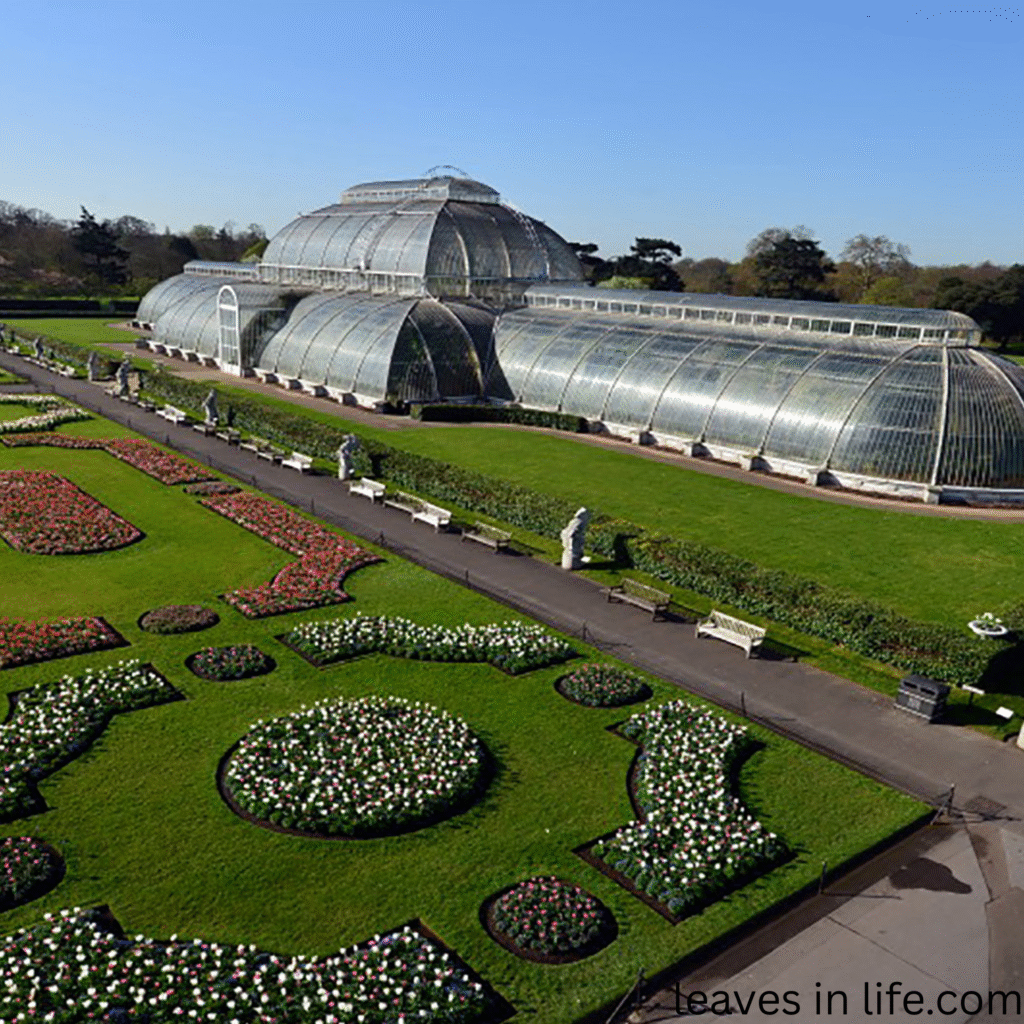
Royal Botanic Gardens (Kew)
Location: The Royal Botanic Gardens, Kew is located in Richmond, southwest London, along the south bank of the River Thames. It lies between Kew and Richmond town centers, about 30 minutes from central London.
Accessibility: Entry to Kew Gardens is not free. Visitors need to buy a ticket, and prices vary for adults, children, concessions, and memberships. Children under 4 usually go free.
Best time to visit: Spring and summer are ideal for gardens in full bloom, while winter is best for festive experiences.
Rose Garden Kew – London
The Royal Botanic Gardens, Kew—often called Kew Gardens—is a UNESCO World Heritage Site in southwest London. It spans over 300 acres, showcasing one of the world’s largest collections of plants and fungi. Known for its historic Palm House, Temperate House, and the Great Pagoda, Kew combines breathtaking gardens with cutting-edge botanical research, making it both a cultural treasure and a global center for plant science.
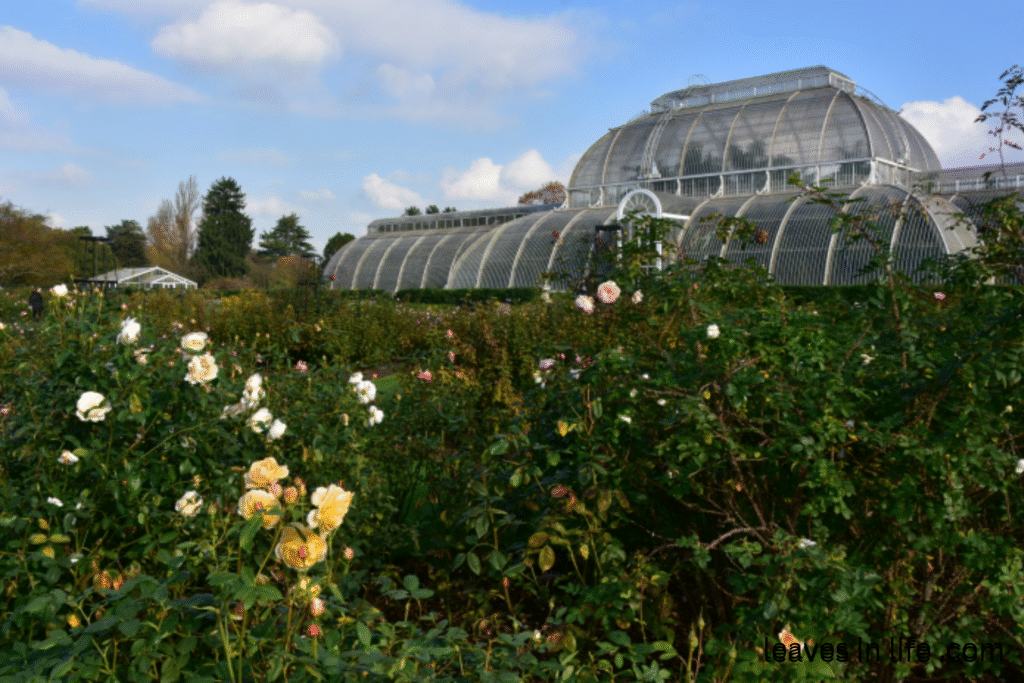
Historic Importance:
The Kew Rose Gardens in london hold historic importance as part of the Royal Botanic Gardens, Kew (established in 1759), a world-renowned heritage site. The Rose Garden itself was first laid out in 1848 by Sir William Jackson Hooker, Kew’s first official Director, and later redesigned in 2009 by Nigel Dunnett to blend historic charm with modern planting design. Designed in the 19th century during the height of Victorian interest in roses, it has long been admired by British royalty, reflecting the cultural significance of roses in England. It is one of the best rose gardens in London. it preserves both historic and modern rose varieties. it serves as a living record for horticultural research and education.
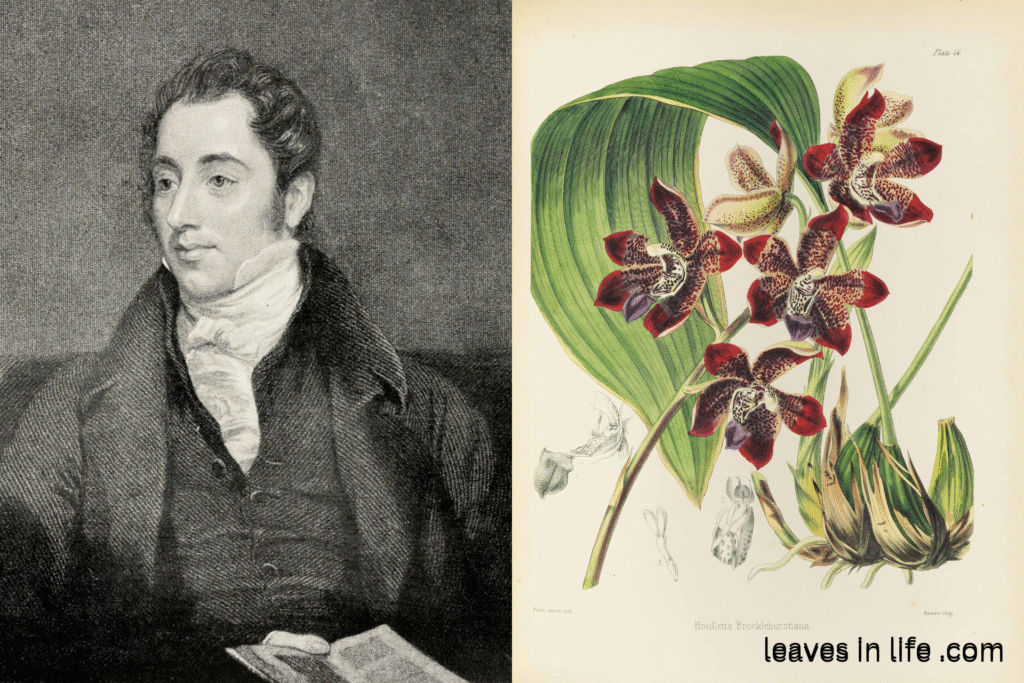
Navigation:
- Location: Royal Botanic Gardens, Kew, Richmond, London, TW9 3AE.
- Entrances: Victoria Gate (main), Elizabeth Gate (near Kew Green), Brentford Gate (by Kew Bridge), and Lion Gate (near Richmond).
- Visitor tip: The main visitor facilities, including the Rose Garden, are easiest accessed via Victoria Gate
By Tube: Nearest station: Kew Gardens (District Line & London Overground) – about a 5-minute walk to Victoria Gate.
By Train: From London Waterloo to Kew Bridge Station – about a 10-minute walk to Brentford Gate.
By Bus: Routes stopping near Kew: 65, 391, 237, 267. They connect from Richmond, Hammersmith, and other key points.
By Car: Parking available at Brentford Gate Car Park (TW9 3AF). Spaces are limited and charges apply.
By Bike/On Foot: Cycle racks at all gates. Pleasant riverside walks from Richmond or Chiswick.
Annual events:
- Summer Rose Bloom (June–August): Main Rose Garden and Wild Rose Garden in full colour and fragrance.
- Guided Walks & Member Tours: Seasonal tours often feature the Rose Garden’s history and varieties.
- Kew the Music (July): Outdoor concerts with the Rose Garden as part of the scenic backdrop.
- Spring Flower Season (March–May): Other blossoms in focus, Rose Garden less central.
- Christmas at Kew (Nov–Jan): Light trails across the gardens; Rose Garden structure visible but roses dormant.
Nearby landmarks:
- Kew Palace: Historic royal residence within Kew Gardens, once home to King George III.
- Temperate House: The world’s largest Victorian glasshouse, showcasing rare and endangered plants.
- Palm House: Iconic 19th-century glasshouse with tropical plants, symbol of Kew’s heritage.
- The Pagoda: An 18th-century Chinese-style tower, a striking historic landmark in the gardens.
- River Thames: Flows beside Kew, adding scenic beauty and historic trade importance.
- Richmond Park: A vast royal park nearby, famous for deer herds and landscapes.
- Kew Bridge: Historic crossing over the Thames, linking Kew to Brentford.
Rose Varieties:
- The Rose Garden has about 170 different species and cultivars of rose. Kew Gardens
- Many of the roses are modern shrub roses, especially those by David Austin, chosen for their strong bloom, repeat flowering, good health/disease resistance, and fragrance. Kew Gardens
- There is a gradient of colour in the Rose Garden from pale to bold colours, moving west towards the Palm House. Kew Gardens
- Shrub roses (including modern English roses) — many by David Austin. Kew Gardens
- Wild rose species and cultivars — representing older species & more natural forms. Kew Gardens
- Hybrid Musk roses — e.g. Rosa ‘Kew Gardens’ = ‘Ausfence’. Kew Gardens
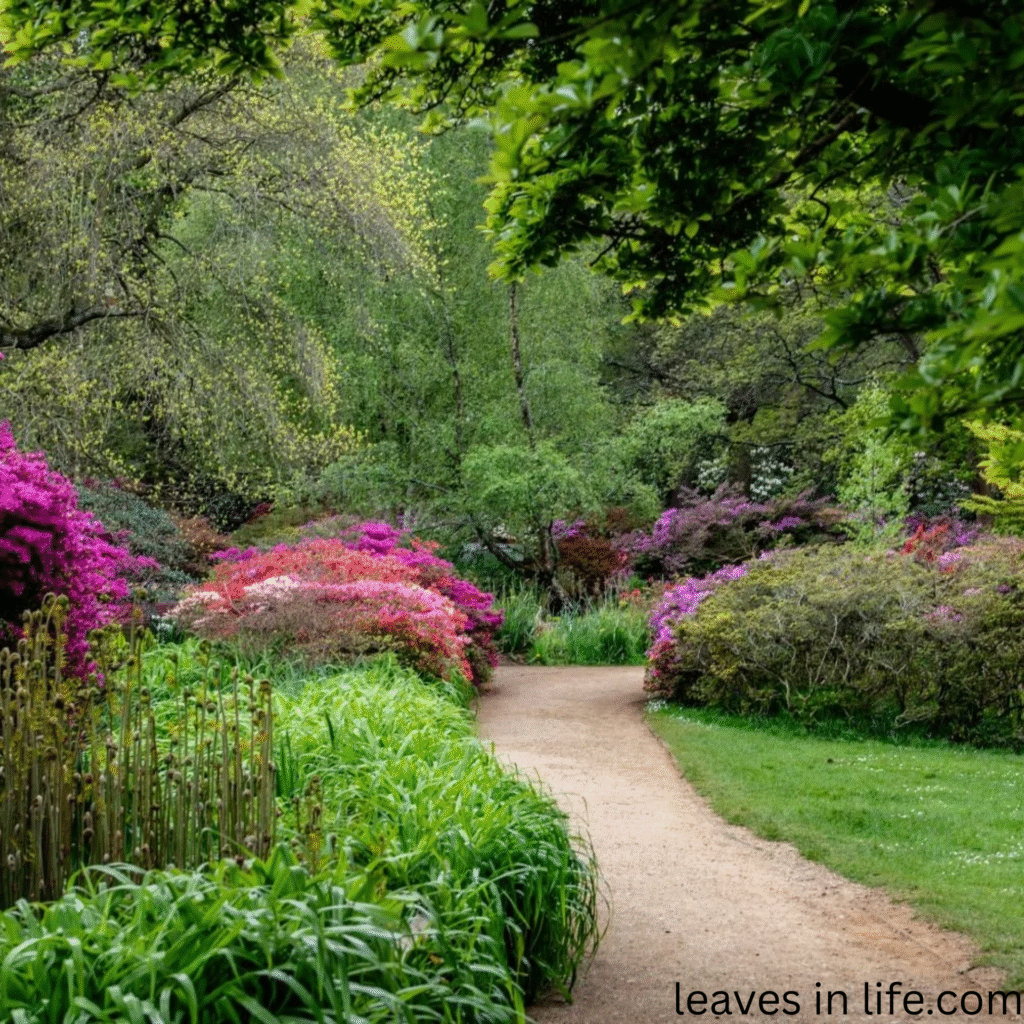
Richmond Park
Location: Richmond Park is located in southwest London, in the borough of Richmond upon Thames. It is bordered by Richmond, Roehampton, Kingston upon Thames, and Twickenham, with the main entrance area marked by the postcode TW10 5HS.
Accessibility: Richmond Park is free for everyone to enjoy. Families, tourists, walkers, cyclists, and nature lovers visit for its views and deer, with access also available for people with mobility needs. Dogs are welcome if kept under control.
Best time to visit: The best time to visit is late April to early May, when flowering shrubs are in full bloom, creating vibrant colours throughout the woodland garden.
Isabella Plantations – Richmond Rose gardens in London
One of the best Rose gardens in London, it inspires with its vibrant blooms. reminding us that growth takes patience and care. Each rose encourages us to embrace our journey, bloom despite challenges, and find joy in life’s simple, colourful moments.

Historic importance:
Richmond Park was created in the 17th century by King Charles I as a royal deer park. It is the largest of London’s Royal Parks and a National Nature Reserve. The park holds historic monuments, Isabella Plantation, and Pembroke Lodge. It also interests those who study royal history and landscape design. Today it is a modern green haven for recreation and wildlife.
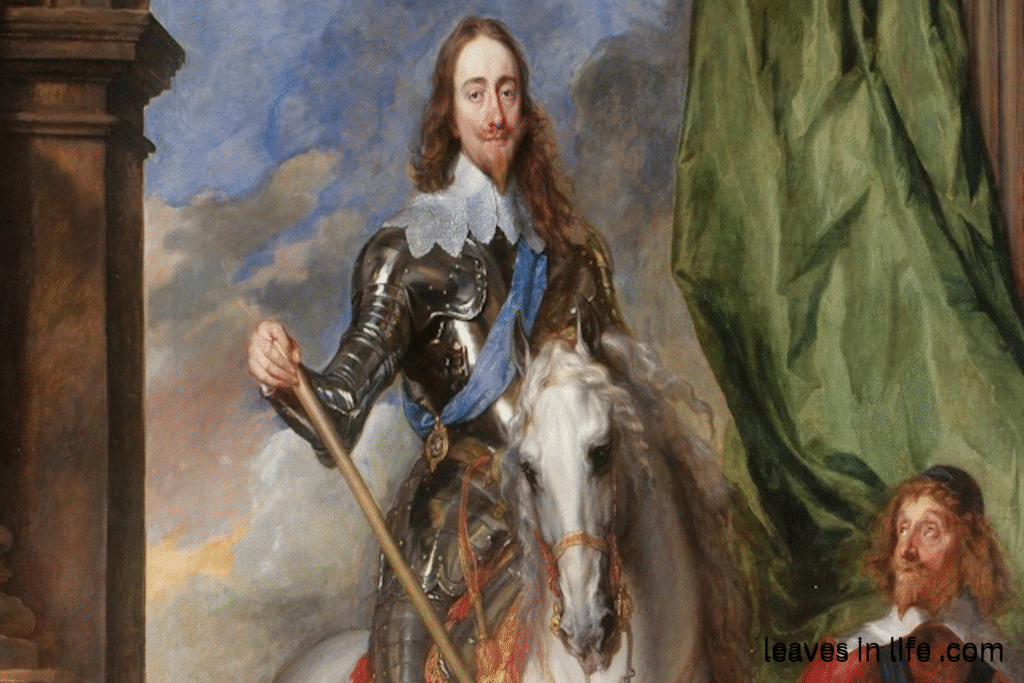
The Isabella Plantation began in the 19th century and grew further in the 20th. It is known for rhododendrons, azaleas, and colourful plantings. Its rose gardens add beauty, fragrance, and charm. They show both historic design and modern care for nature and visitors.
Navigation:
- Location: Isabella Plantation is in the heart of Richmond Park, close to Pen Ponds.
- Entrance: The main entrance is at Peg’s Pond Gate, beside the car park, which also has Blue Badge spaces.
- Visitor Tip: Wear comfortable shoes, as paths are long and can be uneven. Spring and early summer are the best times to see the plantation in full bloom.
By Tube/Train: Travel to Richmond Station (District Line, Overground, and National Rail). From there, it’s about a 15–20 minute walk to Richmond Gate, then follow signs inside the park.
By Bus: Bus routes 65, 371, 33, 85, 72, and 285 stop near Richmond and Kingston gates, giving access into the park.
By Car: Enter through Richmond Gate or Kingston Gate and follow the internal park road signs to Peg’s Pond Car Park, the nearest parking for Isabella Plantation.
Annual events:
- Late April to Early May: The Isabella Plantation’s Kurume azaleas, rhododendrons, magnolias and camellias are in full bloom. This is the peak floral display season.
- Autumn (around October-November): The Plantation shows off autumn colours (acers, leaves turning gold, red, orange) and there are “walkthroughs” or scenic visits to enjoy the fall foliage. The Royal Parks
- Guided Garden Walks: Throughout the year there are free walks led by gardeners in Isabella Plantation. These are often held on Fridays and Sundays. Meeting point is usually by the Broomfield Hill gate.
- Monthly Park & Isabella Diaries: The Friends of Richmond Park publish regular diaries with garden and season-specific highlights. These may also note special viewing opportunities.
Nearby Landmarks:
- Pembroke Lodge – historic Georgian mansion with gardens and tea rooms, inside Richmond Park.
- King Henry’s Mound – a famous viewpoint in the park with a protected sightline to St Paul’s Cathedral.
- Pen Ponds – two large ornamental ponds, popular for birdwatching and walks.
- White Lodge – 18th-century royal hunting lodge, now home to the Royal Ballet School.
- Richmond Hill – just outside the park, offering one of London’s most iconic views over the Thames.
- Ham House and Garden – a 17th-century riverside mansion managed by the National Trust, close to Richmond Gate.
- Kew Gardens – the Royal Botanic Gardens, a short distance from Richmond Park.
Rose varieties:
- Hybrid Tea Roses – classic, large, single blooms.
- Floribunda Roses – clusters of flowers with strong colour.
- Climbing Roses – trained over arches and walls in Pembroke Lodge gardens.
- Shrub Roses – hardy and decorative, often mixed into woodland edges.
- Old English Roses – scented, full-petaled traditional varieties.
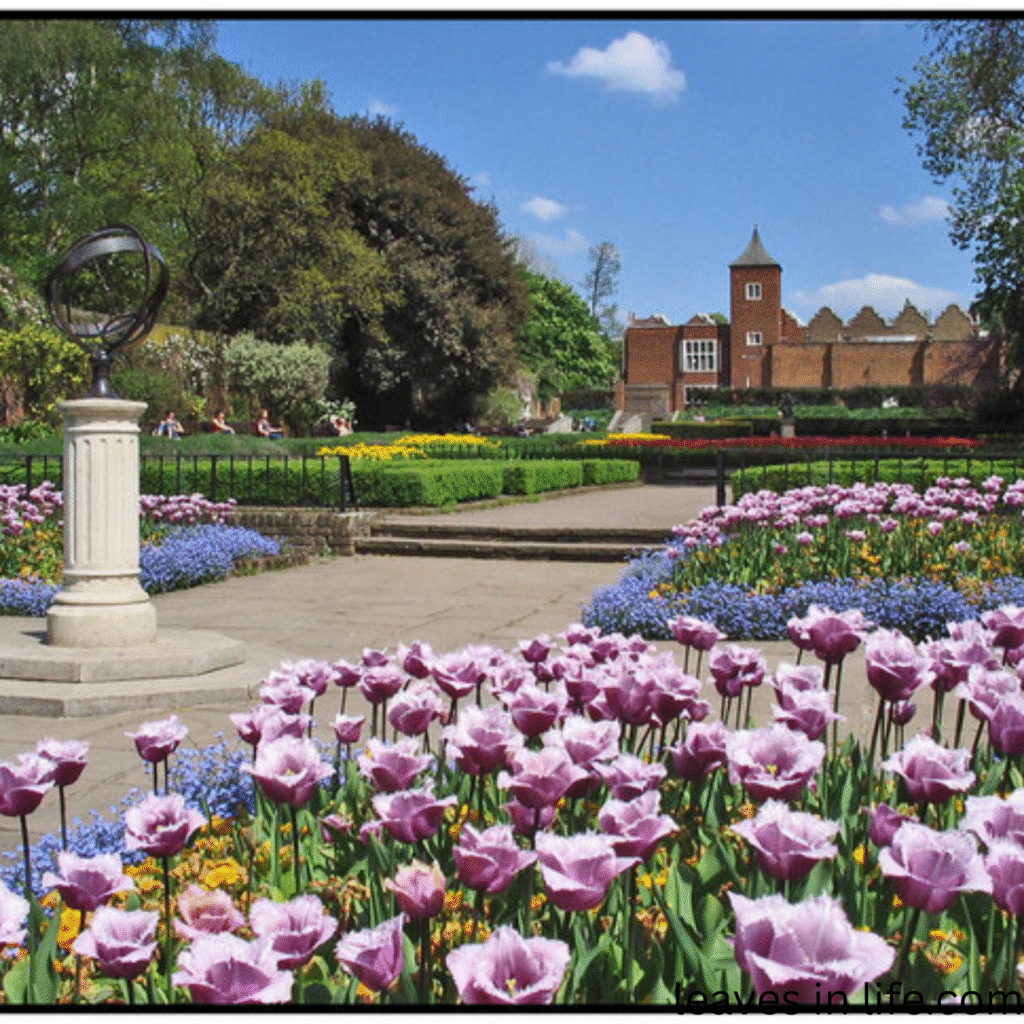
Holland Park
Location: Holland Park is in the Kensington district of West London.
Its main address is Ilchester Place, London W8 6LU, UK, with entrances from Holland Park Avenue, Kensington High Street, and Abbotsbury Road.
Accessibility: It is a public park and is open to everyone free of charge. Most of its paths and gardens are accessible to visitors, including families, walkers, and people with mobility needs. The park has step-free entrances, wide paths in many areas, and accessible toilets. Some sections, like woodland trails, can be uneven, but the main attractions such as the Kyoto Garden, playgrounds, and sports facilities are easy to reach.
Best time to visit: spring and summer (April–July) when the flowers, especially in the Kyoto Garden and formal beds, are in full bloom and the park feels most vibrant. Autumn is also beautiful for its colourful foliage, while winter offers a quieter, peaceful atmosphere with fewer crowds.
Kyoto & Formal Gardens – Holland park London
The Kyoto Garden and Formal Gardens in Holland Park are hidden gems that capture both serenity and elegance. The Kyoto Garden, with its koi pond, waterfall, and Japanese maples, offers peace and reflection, while the Formal Gardens bloom with colour, fragrance, and the timeless beauty of roses. These spaces show how nature can uplift the spirit and bring calm to the heart. For anyone seeking inspiration among flowers, the rose gardens in London are a reminder that beauty and renewal can always be found close to home, like seeds of hope planted in the city.
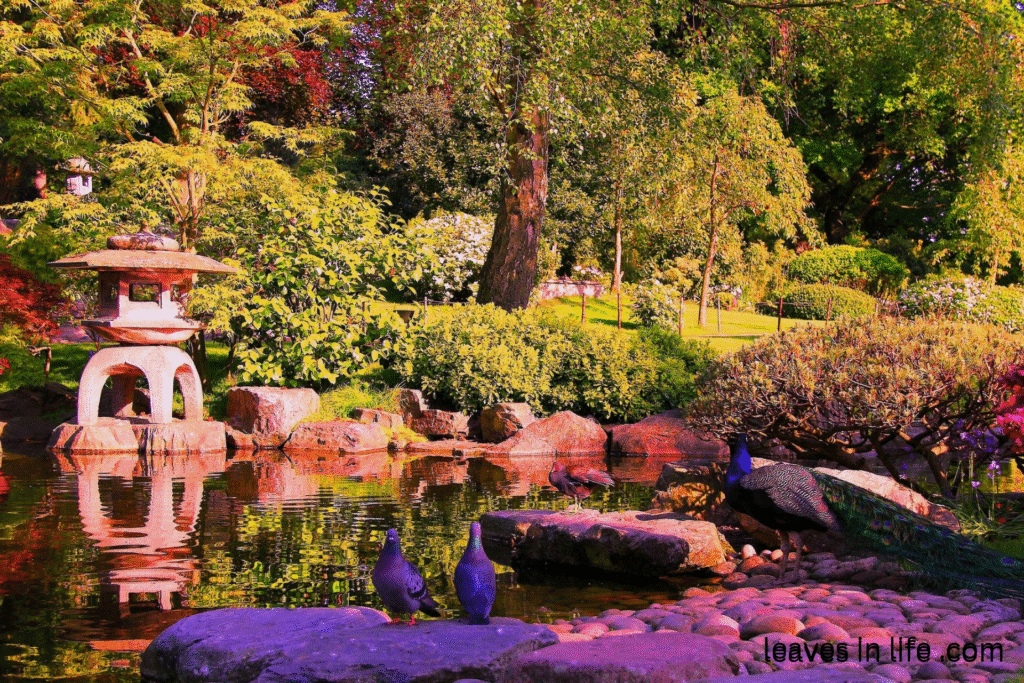
Historic Importance:
The Kyoto Garden and Formal Gardens in Holland Park hold both historic and cultural importance. The Kyoto Garden was a gift from the city of Kyoto in 1991, symbolising friendship between Japan and the UK, and today it stands as a place of peace, reflection, and cultural exchange. The Formal Gardens, with their classic design and colourful rose gardens in London, reflect the long English tradition of blending beauty with order in public landscapes. Together, they preserve history, celebrate international ties, and offer modern visitors a sanctuary of calm and inspiration in the heart of London.
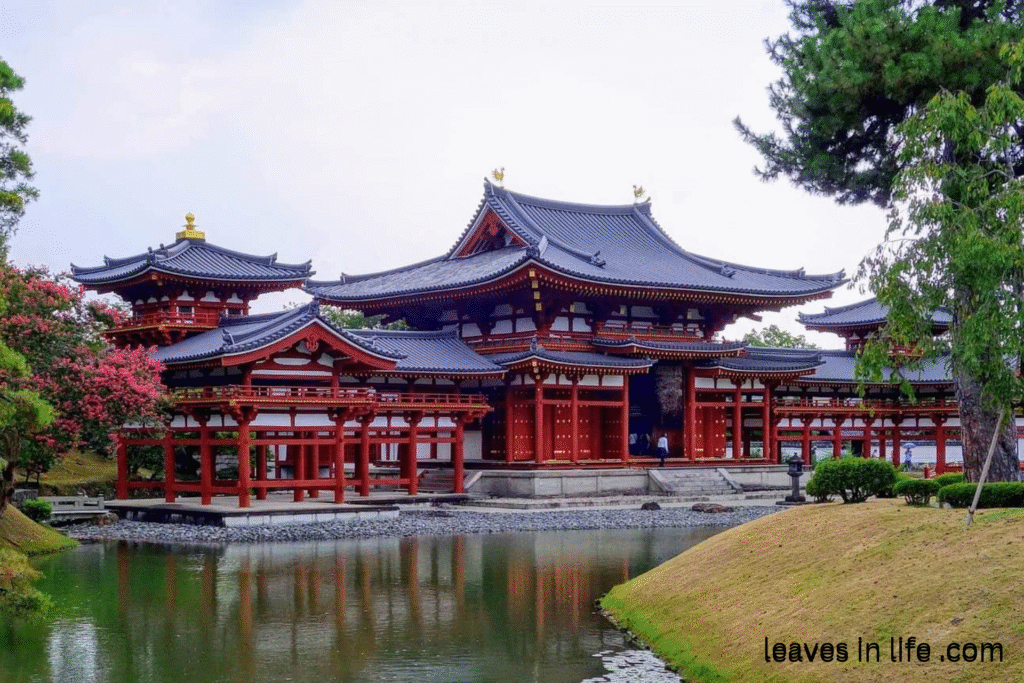
Navigation:
- Location: Kyoto Garden is inside Holland Park, Ilchester Place, London W8 6LU.
- Entrance: You can enter the park from Ilchester Place, Abbotsbury Road, or Holland Walk, then follow the paths to the garden in the centre of the park, just south of the tennis courts.
- Visitor Tip: Visit early in the morning or on weekdays for a quieter experience. Spring and autumn are the best seasons for blossoms and colours for rose gardens in London.
- By Tube: The nearest station is Holland Park (Central Line), about 5 minutes away on foot.
- By Bus: Routes 9, 10, 27, 28, 49, 328, and C1 stop near the park entrances.
- By Car: Use postcode W8 6LU; parking is limited to pay-and-display bays nearby.
Annual events:
- Cherry Blossom / Spring Blooming — In spring (late March to early April), cherry trees bloom, which often draws visitors wanting to experience “hanami”-style walks and photography.
- Autumn Colours — In October-November, the maples and other trees put on a vibrant show of autumn foliage. Many walks are organized to appreciate the changing colours.
- Guided Walks / Group Walks — There are occasional walks organised by local groups (e.g. community groups or meet-ups) that include tours of Kyoto Garden, exploring its history, flora, and peace spots.
- Cultural Meetups — Events tied to Japanese culture (sometimes exhibitions, talks, or casual meetups) that incorporate a walk in Kyoto Garden
Nearby Landmarks:
- Design Museum – A modern museum of contemporary design, close to Holland Park.
- Kensington High Street – A lively hub for shopping and dining near the park.
- Leighton House Museum – Historic home of artist Frederic Leighton, showcasing fine art and interiors.
- Kensington Palace – A royal residence with rich history, located in Kensington Gardens (one of the rose gardens in London).
- Royal Albert Hall – London’s iconic venue for concerts and cultural events.
- Hyde Park – One of London’s largest green spaces, also home to Queen Mary’s Rose Gardens, among the most famous rose gardens in London.
Rose varieties:
The Formal Gardens of Holland Park feature a lovely rose gardens in London, though it is smaller compared to Hyde Park or Regent’s Park. The varieties you’ll usually find include:
- Hybrid Tea Roses – Known for their large, elegant blooms in vibrant colours.
- Floribunda Roses – Producing clusters of flowers, offering colour throughout the summer.
- Climbing Roses – Trained over arches and trellises, adding height and fragrance.
- Shrub Roses – Hardy and bushy, giving a natural, classic look.
- Old English Roses – With full, fragrant blooms reminiscent of traditional gardens.
Conclusion
In conclusion, London offers some of the most stunning rose gardens in the world, each carrying its own charm and story. The timeless beauty of Queen Mary’s Rose Garden in Regent’s Park dazzles with hundreds of varieties, while the Hyde Park Rose Garden blends colour and fragrance with history. The Rose Gardens at Kew celebrate royal heritage and horticultural excellence, and the Isabella Plantation in Richmond Park adds a wild yet graceful touch of seasonal blooms. Finally, the Kyoto and Formal Gardens in Holland Park combine cultural elegance with traditional English roses. Together, these five remarkable spots make the rose gardens in London a true paradise for nature lovers, offering peace, beauty, and inspiration in every season.

